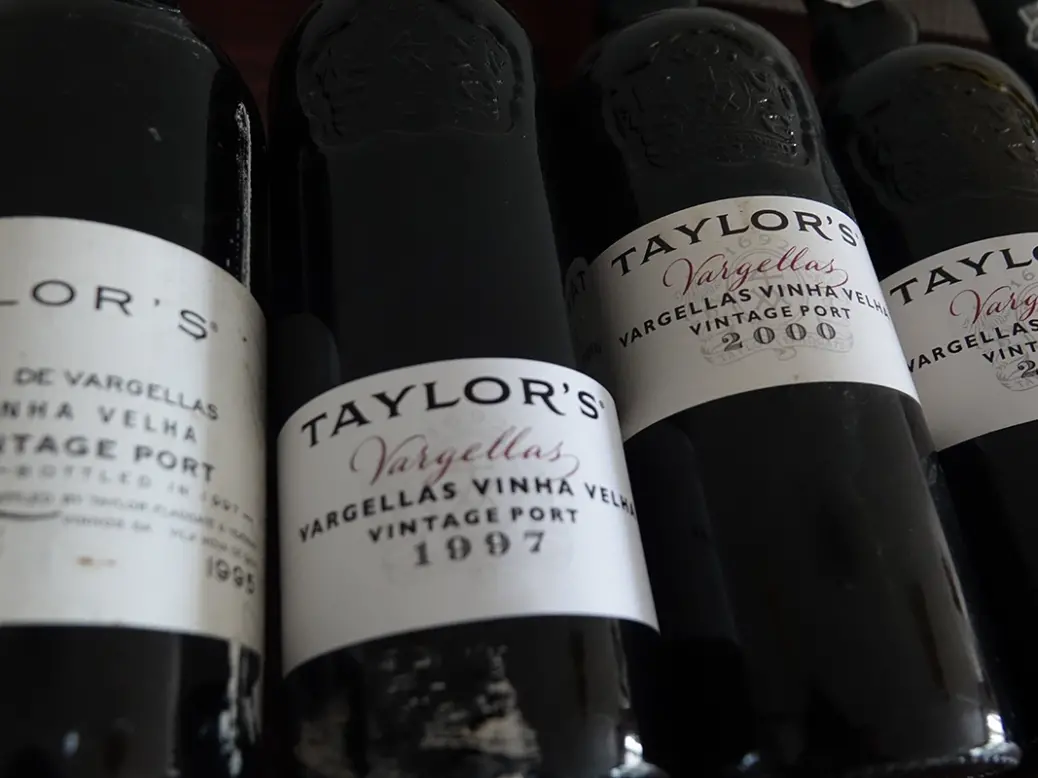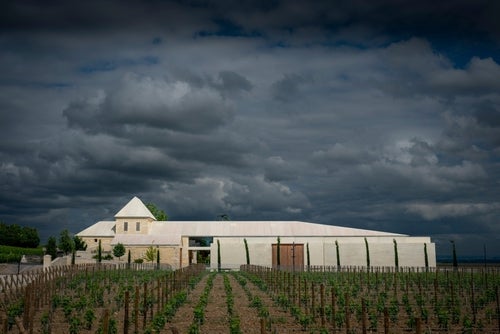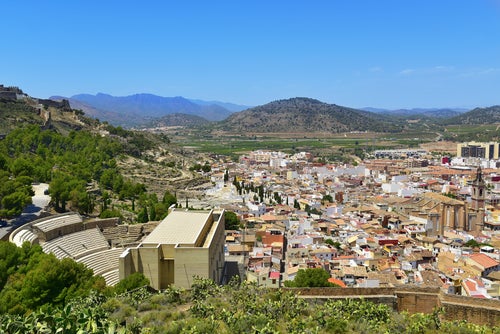
There is little visual difference between the labels of the Quinta de Vargellas Vinha Velha and the Quinta de Vargellas Vintage Ports from Fladgate’s flagship brand Taylor’s.
By definition, a single-quinta Vintage Port can be made only from grapes from the named quinta (estate), and the limited-edition Vargellas Vinha Velha, only from grapes from very selected plots of this quinta.
As a reminder, the Fladgate Partnership bottles three different types of Taylor’s Vintage Port:
1. Taylor’s Quinta de Vargellas Vinha Velha Vintage Port (limited edition)
2. Taylor’s Vintage Port (or classical Taylor Vintage Port)
3. Taylor’s Quinta de Vargellas, or Quinta de Terra Feita Vintage Port (single-quinta Vintage Port)
Like the prestigious Quinta do Noval Nacional, the Vargellas Vinha Velha (or “triple V”) does not follow the crowd when it comes to the generally declared years for Vintage Port. First produced from 1995, it has since been bottled from the 1997, 2000, 2004, 2007, 2009, 2011, and 2017 vintages. So, you will notice that years like 2003, 2015, or 2016 have been passed over, and less widely declared years like 1995 and 2004 have been privileged. Head winemaker David Guimaraens is convinced of the remarkable characteristics of the Vinha Velha Vintage Ports, their multidimensional complexity, and their distinctive and subtle personality. He decides to bottle only when the grapes tell him to.
Unlike most comparisons of Quinta do Noval Vintage Port and Quinta do Noval Nacional from the same year, Taylor’s VVV does not appear to be younger or more closed or more intense than the Taylor’s Vintage Port from the same year. Rather, VVV is a more elegant version than the classic Vintage Port, with extraordinary finesse. Guimaraens believes that this is the result of the rich diversity of grape varieties planted on these old terraces, many of which are traditional but no longer widely used. All of these parcels are field blends, embracing many different grape varieties, with none predominating. The only exception is the micro-parcel Polverinho, which was the site of the first single-variety-planting experiments as far back as 1927, initiated by Taylor’s partner Dick Yeatman, long before anyone else thought to do this.
The grape varieties already identified in the VVV parcels are Tinta da Barca, Tinta Francisca, Tinta Amarela, Gran Noir, Sousão, Tinta Bairrada, and Cornifesto, as well as the more common “famous five” for Port production, Tinta Barroca, Touriga Francesa, Tinta Roriz, Tinto Cão, and Touriga Nacional. The crop for the Vinha Velha is normally harvested from four very prestigious plots of the quinta with its oldest vines. Polverinho, Gricha, and Renova Armazem are all north-facing. Together with northwest-oriented Renova do Deposito, all these parcels deliver grapes with a certain balance and near-perfect acidity levels. The grapes also benefit from altitudes between roughly 400ft and 700ft (120–210m) in all four parcels. With average ages of 90 to 120 years, it is vital to ensure that the wines are never too thick or tannic but are balanced and enlivened by a certain freshness.
A distinct and forceful personality
Guimaraens is very convincing when insisting that the enology team changes almost nothing when making the Vargellas Vinha Velha: “The viticulture and the winemaking is always the same. We just pick and start.” He does, however, point out that the picking date is crucial, since the grapes should not be too ripe to retain the desired freshness in the wine. Most of the four parcels’ grapes that are not used for the VVV go into the classic Taylor or the single-quinta, and the bottles of VVV—averaging only 5,000 or so—are strictly allocated to leading markets worldwide. “We do not want to make more bottles of VVV, because we do not want to sacrifice the style of the classic Taylor’s Port,” explains Guimaraens. All of the grapes go into granite lagares for classic foot-treading. The only variable is the brandy, the quality of which has increased tremendously over the years. “The Vargellas Vinha Velha winemaking taught me a lot of things,” Guimaraens continues. “We co-ferment grape varieties in the lagar and pay much more attention to the lesser-known grape varieties, which sometimes deliver lesser yields but a lot of color, flavor, and individuality.” Guimaraens stresses that the varietal mix in these vinha velha plots has a distinct character, which remains the same over the decades.

If you are lucky enough to taste two or more Vargellas Vinha Velha Vintage Ports side by side, you can easily spot this elegance and freshness, as well as all the complexity of a great Vintage Port. David thinks that in general the classic Taylor’s Vintage Port will have a longer life than the VVV, but here we are talking about a couple of years less than a century of aging potential. I might even beg to disagree, since many more elegant wines outlived the strong, tannic monsters from the past. Only time will tell.
Scarcity is certainly a contribution to the status of collector’s items, but there also needs to be exceptionally fine quality to preserve this status over the decades. If you ever have the chance to taste more than one Vargellas Vinha Velha side by side, you will readily appreciate their similarity in style while also recognizing exactly what each year had to offer. VVVs are sold on strict allocation and are shipped in wooden boxes of three bottles. I am not sure if you can use the word “Burgundy” in the context of Vintage Port—but if you can, it is for the VVVs.
Tasting
2017 Quinta de Vargellas Vinha Velha
The six-year gap between the 2011 and the 2017 is the longest in VVV’s history. Strong dark-red color, with medium-violet reflections. Tobacco, cassis, and black cherry in the deep and complex bouquet. The palate continues this enormous intensity without losing balance: white pepper, tobacco, dark cherry, and cassis; perfectly structured acidity and ripe tannins. Long and multilayered aftertaste. A little more than 5,000 bottles produced. 97
2011 Quinta de Vargellas Vinha Velha
The primus inter pares of the VVVs so far: pitch-dark color with violet reflections. The nose reveals extremely young and vivid red-berry fruit, with a breathtaking intensity and complexity. A silky tannic structure on the palate, as well as perfectly integrated acidity. Raspberry, cherry, cassis, and dark chocolate. Very long aftertaste. 99
2009 Quinta de Vargellas Vinha Velha
This VVV is currently very closed. A deep, dark red, with intense violet reflections. Floral and fruity on the slightly reductive nose, with cassis and raspberry. The palate is slightly closed as well, with noticeable tannins and very supportive acidity. Ripe red-berry and cherry fruit. Long aftertaste. Still needs (a lot of) time. 95
2007 Quinta de Vargellas Vinha Velha
Slightly transparent in the dark-red color. A balanced and distinct bouquet, with fine red-berry fruit, cherry, plum, and tobacco. White pepper, fresh raspberry, and strawberry on the palate, with fine tannins. Long aftertaste. 96
2004 Quinta de Vargellas Vinha Velha
The latest Vinha Velha so far from a year when the classic Taylor’s Vintage Port was not bottled. A dark-red color. Very seductive, fruit-driven nose, with cassis and raspberry and a floral freshness. Good supporting acidity on the palate, with very precise raspberry, black cherry, and dark chocolate. Medium length on the finish. 92+
2000 Quinta de Vargellas Vinha Velha
The millennium VVV is not yet fully awake. Transparent dark red, with a thin, shining rim. A lot of finesse in the bouquet, with peppery notes, extremely well-integrated red-berry fruit, and chocolate. The palate reveals great aging potential, with white pepper, raspberry, a very nice mix of herbs, and milk chocolate. Balanced and long. 96
1997 Quinta de Vargellas Vinha Velha
Transparent dark-red color, with a more intense core and a thin rim. Tobacco, malt, redcurrant, raspberry, and chocolate on the nose. Although balanced on the palate, this wine has a very dense structure, with tobacco, hints of malt and honey, but still residual red-berry fruit. Very long, with a balanced aftertaste. 97
1995 Quinta de Vargellas Vinha Velha
The inaugural VVV shows a transparent dark-red color. White pepper and balanced, mature red fruit, chocolate, and a lot of finesse on the nose. Lots of power and finesse also on the palate, with very good, integrated acidity, fine and ripe tannins, balanced fruit, and chocolate. Cherry, tobacco, and some rustic aromas on the back palate. Long and intense aftertaste. The biggest surprise of all. 95






